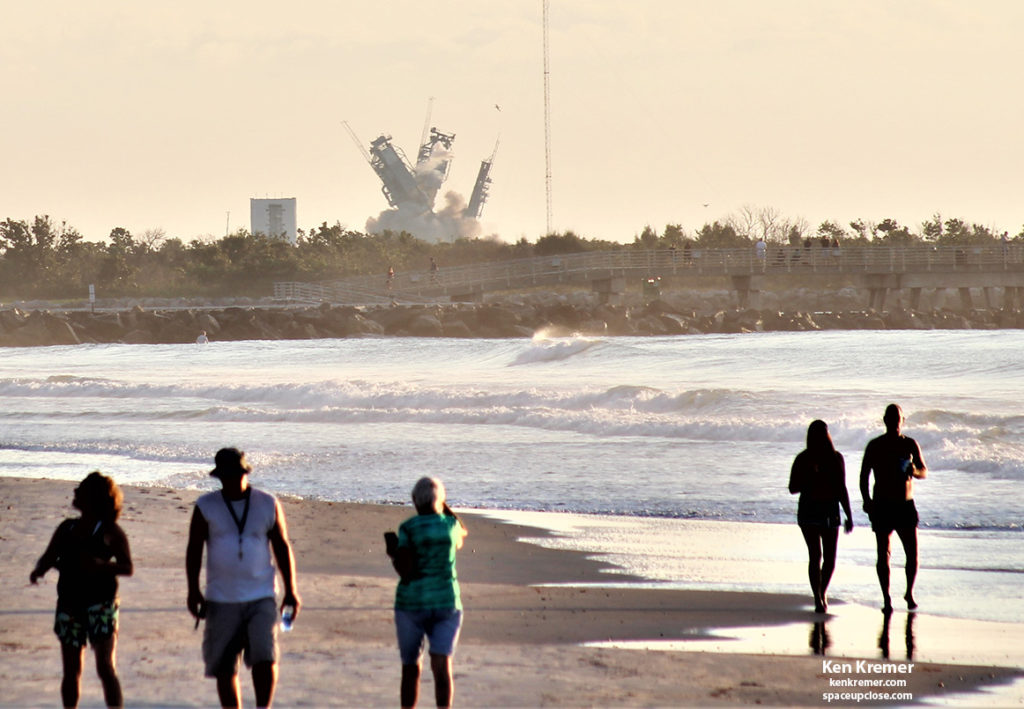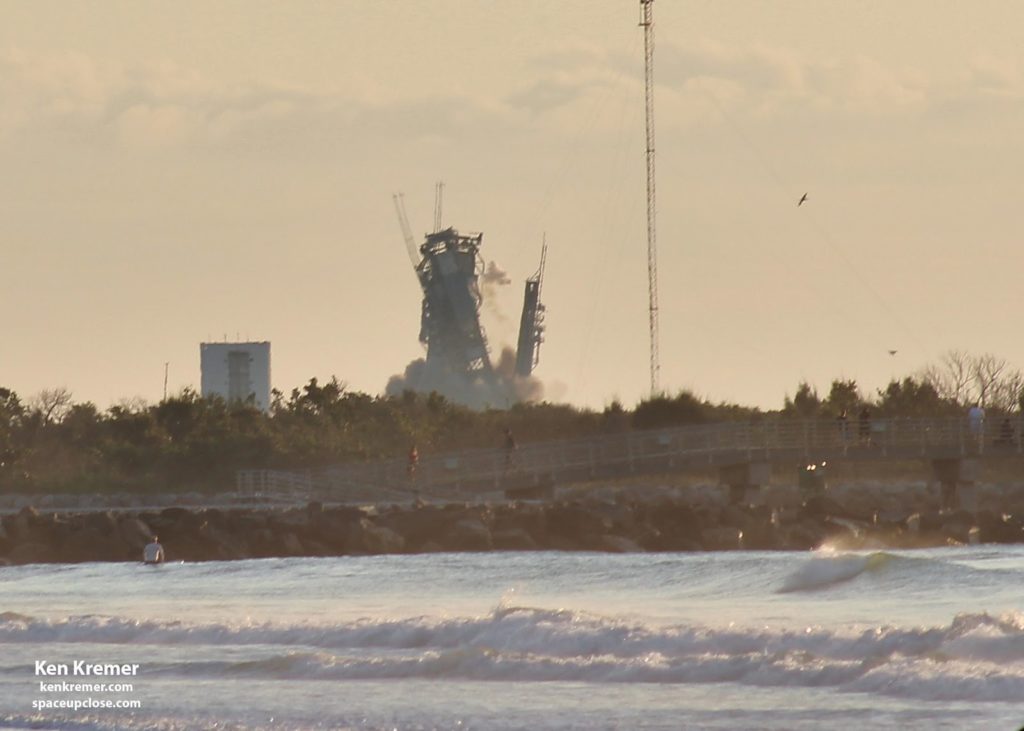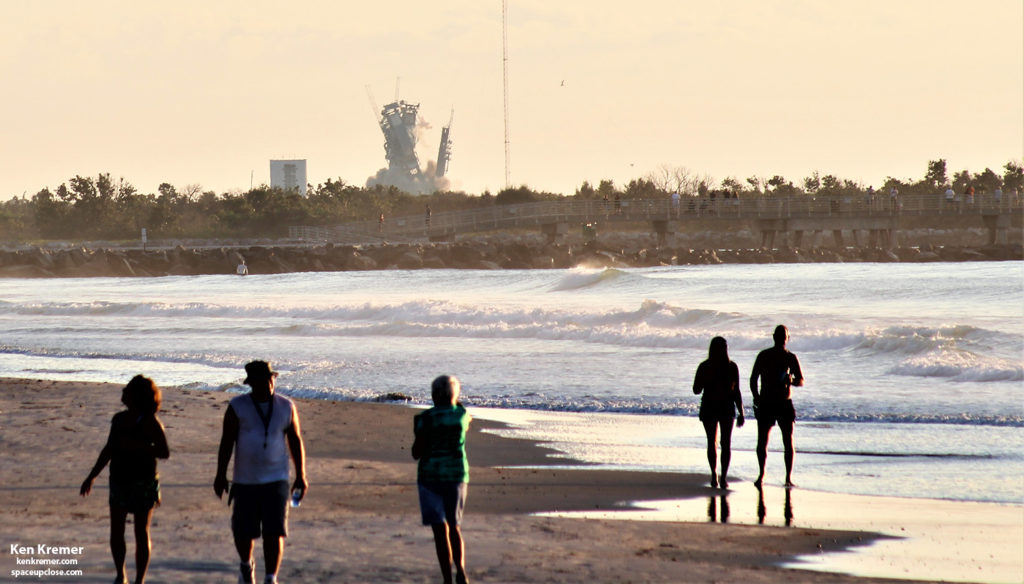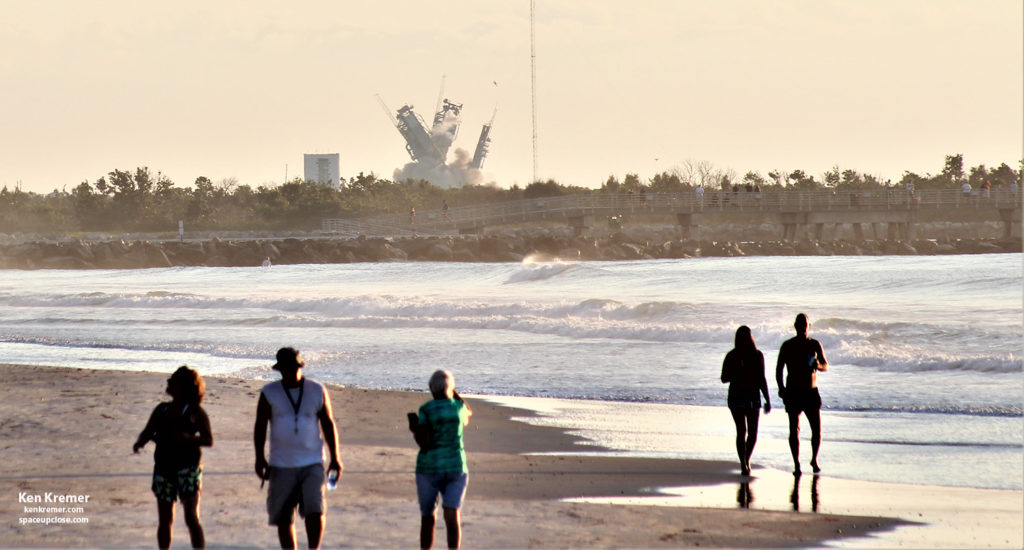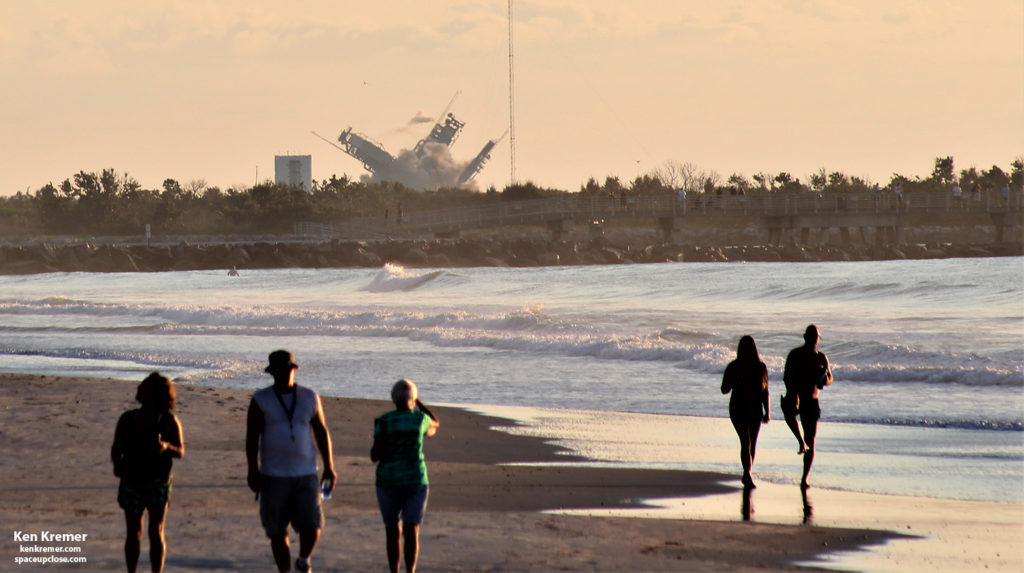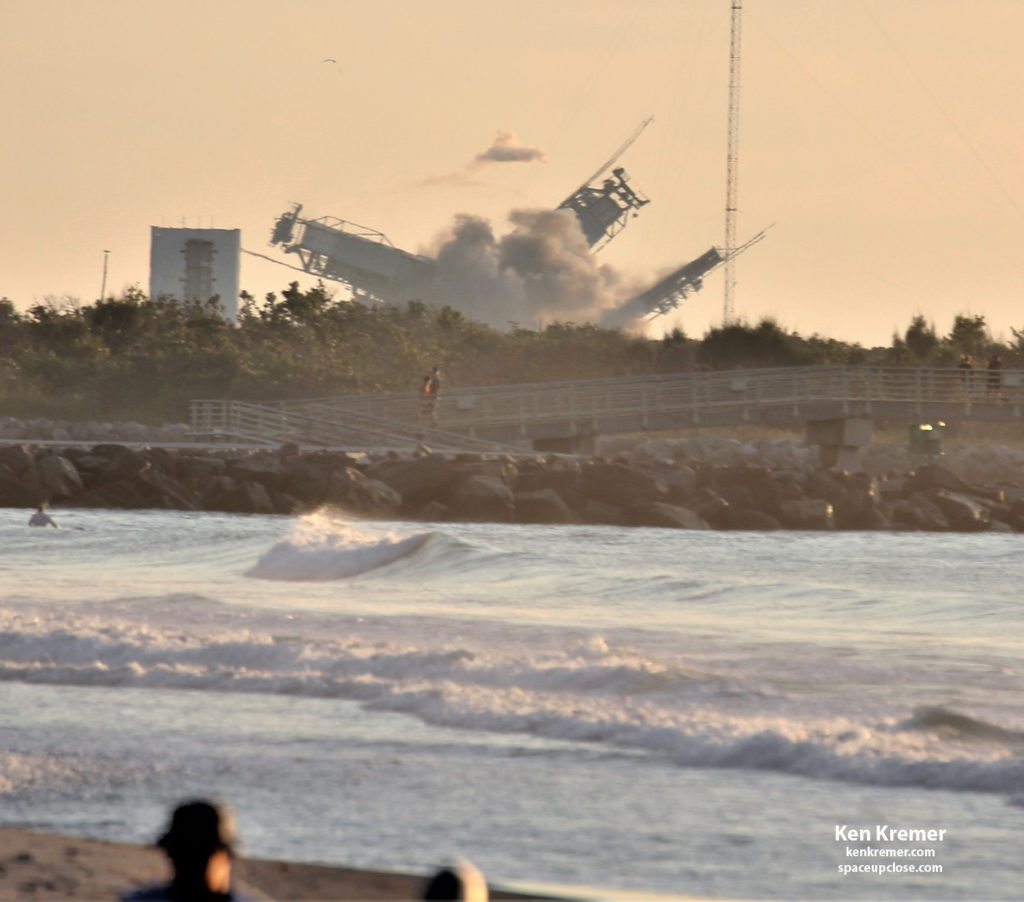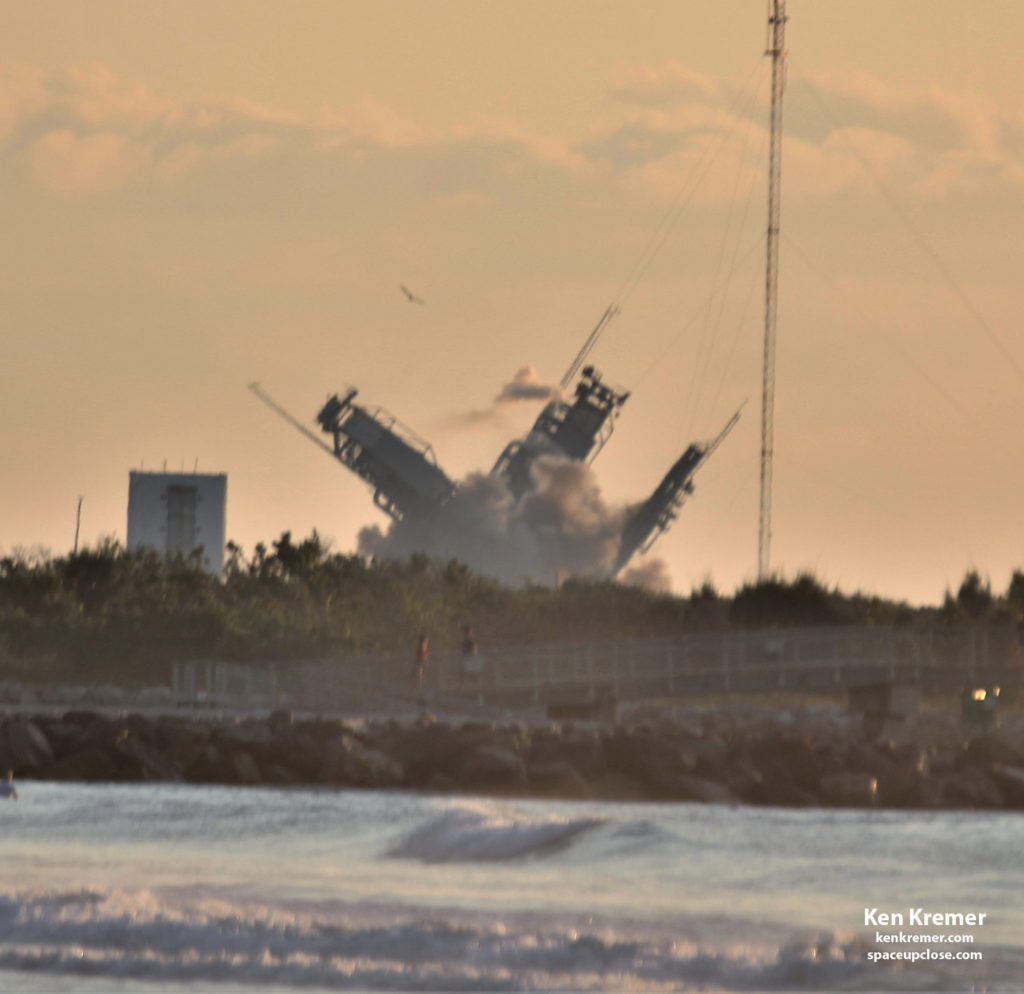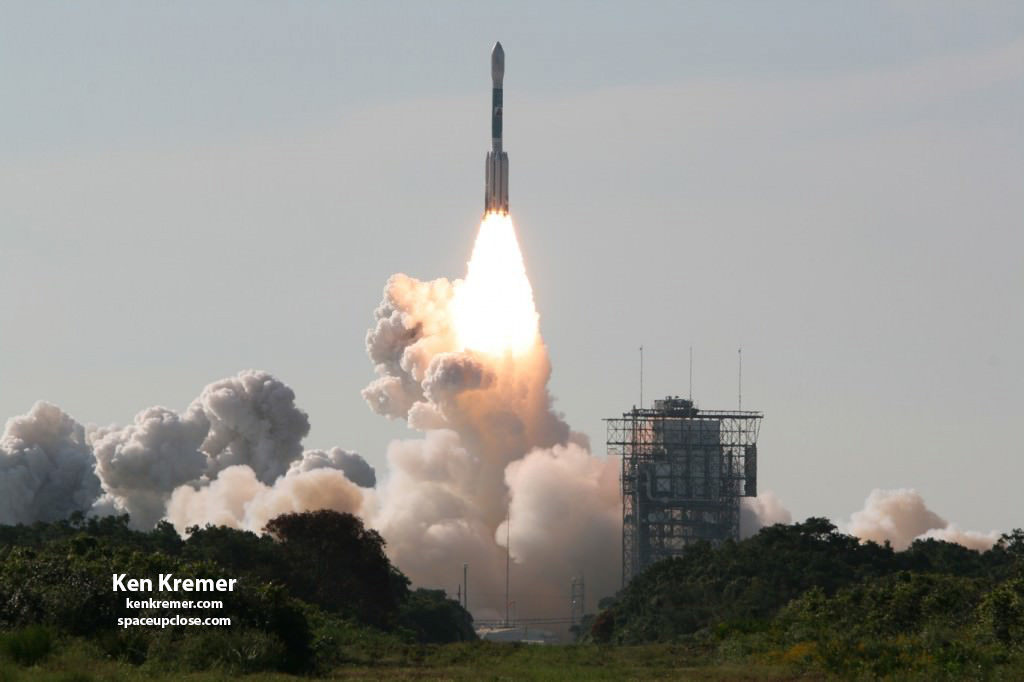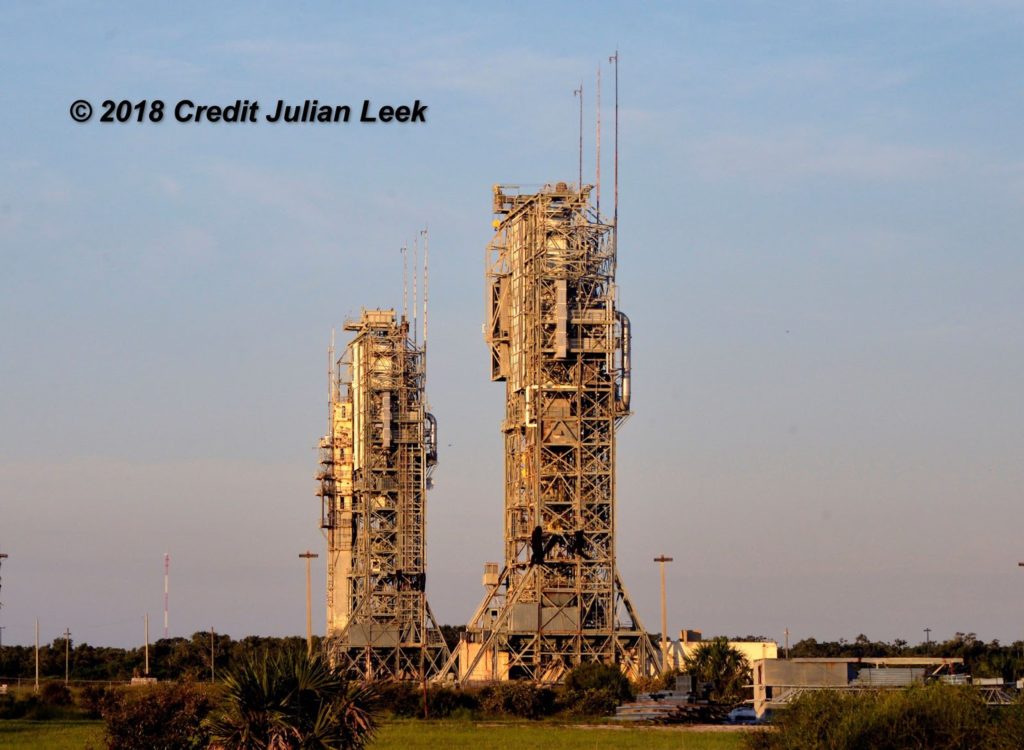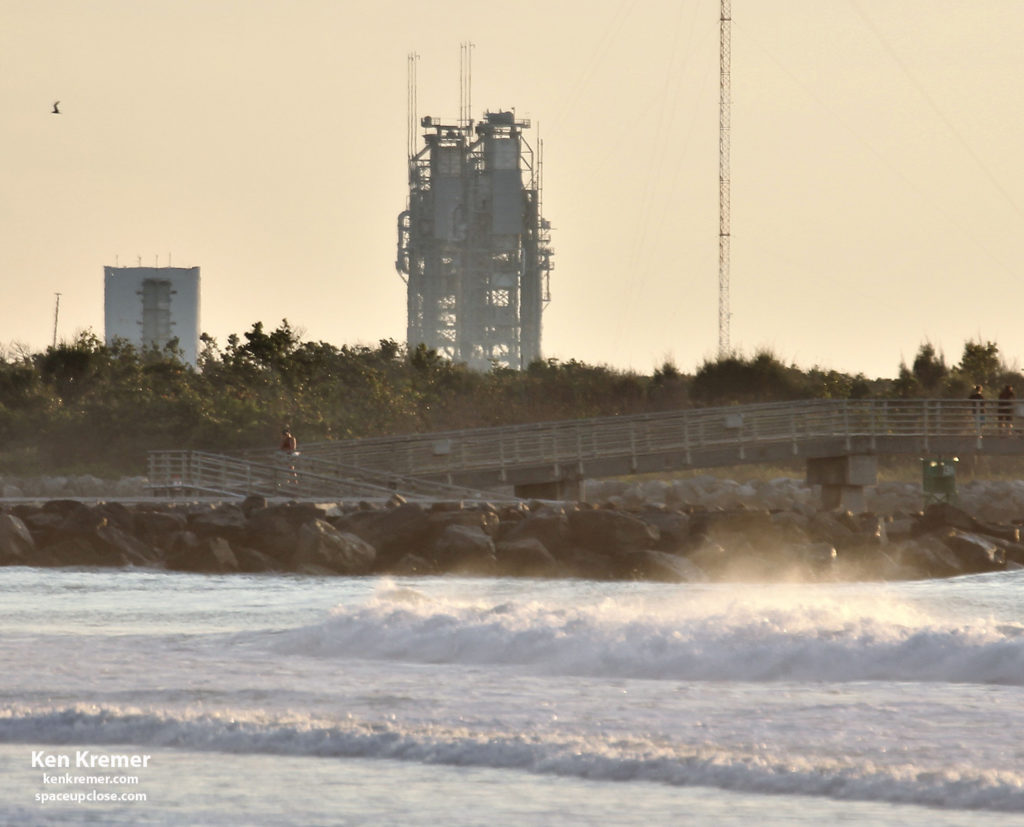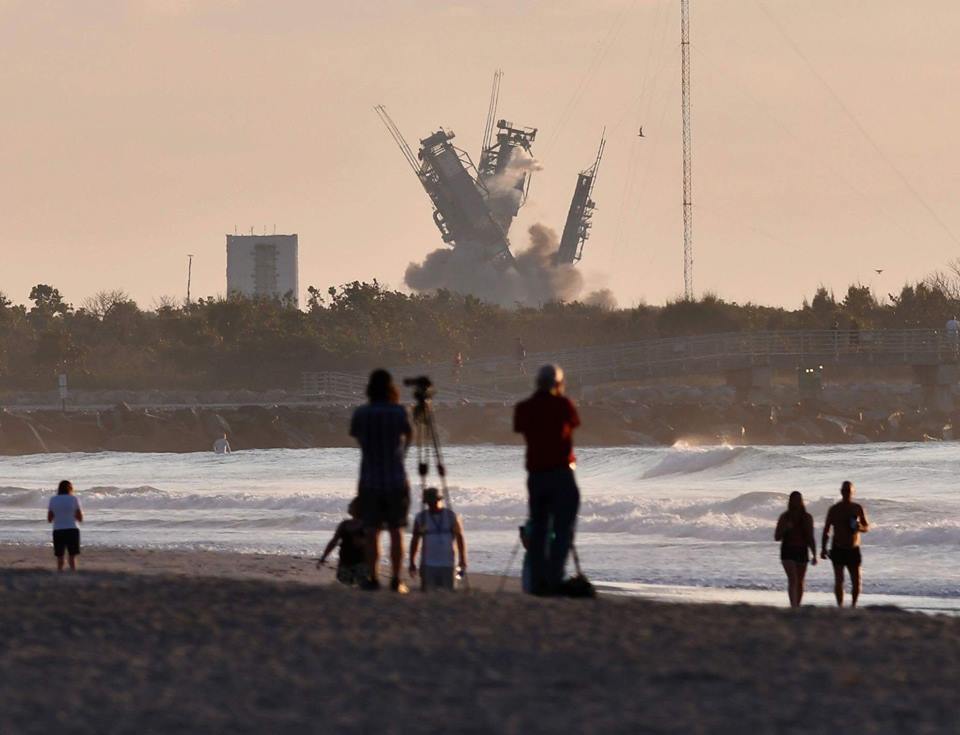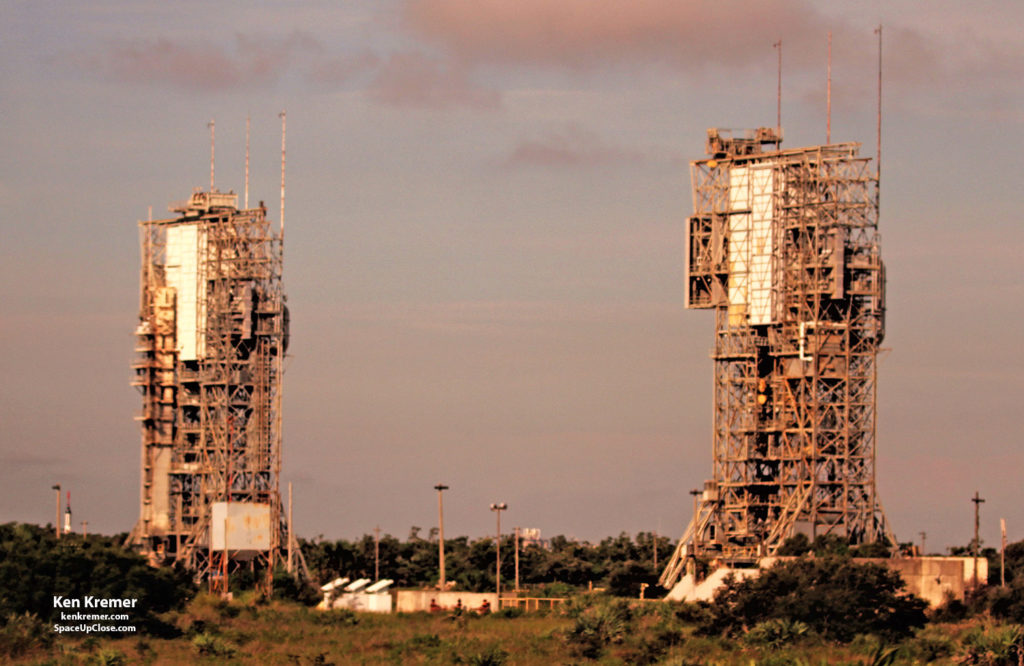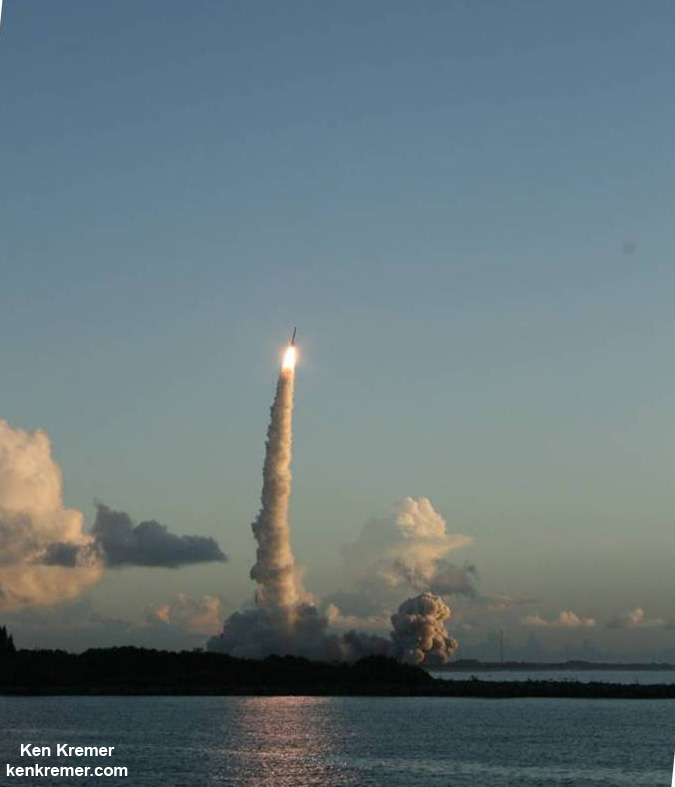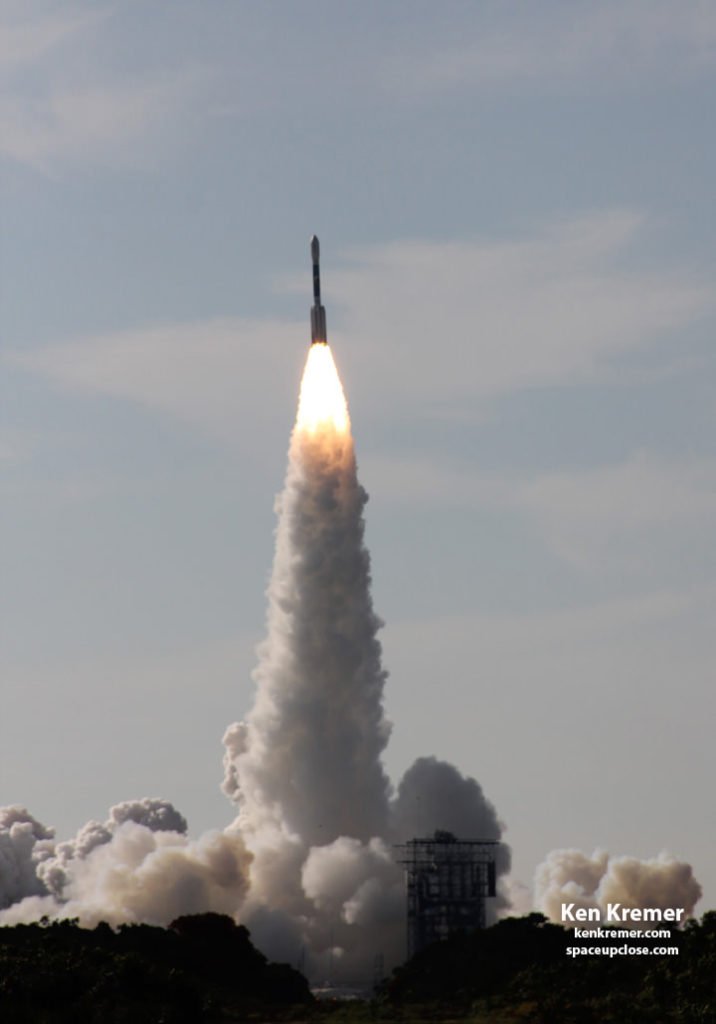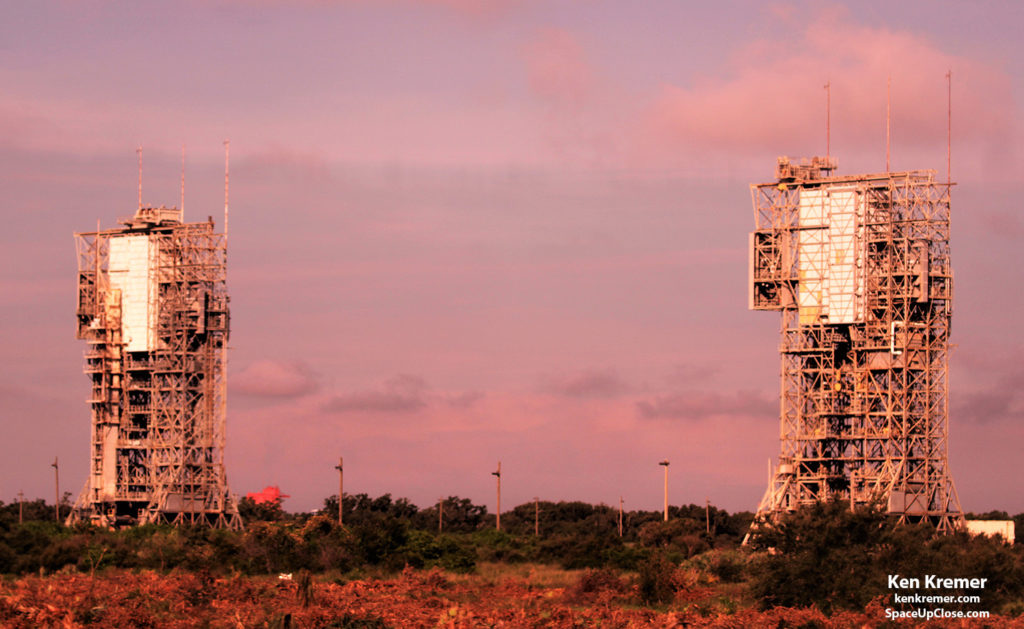twin launch towers at Cape Canaveral Air Force Station Launch Complex 17 are no
more. The nearly 200 foot tall towers at
Space Launch Complex-17 have fallen! Demolished today after delivering 6
decades of superlative space history and delivering 6 decades of superlative
science for NASA’s historic missions of exploration and discovery, along with
critical communications, navigation, weather and military satellites – many the
first of their kind serving as pathfinders to decades of stunning leaps in
capability.
gantries comprising Pads 17A and 17B were intentionally destroyed today, July
12, shortly after 7 a.m. EDT (1100 GMT) under sunny Sunshine State Skies.
Pads 17A and 17B were gone in an instant, felled by
explosives with the flick of a switch by Brig. Gen.
Wayne Monteith, commander of the Air Force’s 45th Space at 7 a.m. EDT Thursday
morning July 12, 2018, that created loud explosions rumbling across the Florida
Space Coast.
at the pad, the charges were detonated about one second apart – as I watched
from the Jetty Park/Cape Canaveral Beach to get a wider perspective of the
impact with just a few onlookers who were mostly oblivious to the sad goings
on.
to the demolition.
gallery.
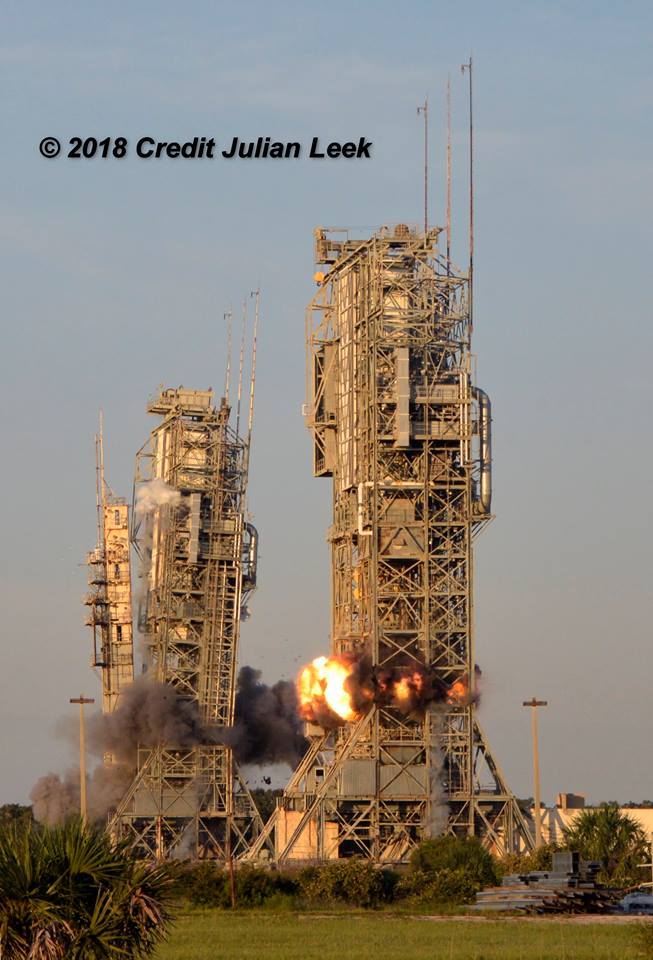 |
|
Destructive toppling of twin towers at Space Launch
Complex-17 (SLC-17) on Cape Canaveral Air Force Station, FL on July 12, 2018. Credit: Julian Leek |
iconic towers which pointed the way to America’s Premiere Gateway to Space for
over 60 years and offered us comfort that we were indeed at the right place to
make a brighter future happen for all humanity.
graced America’s Spaceport are toppled towers – now lying in twisted heaps of metal
and concrete rubble, simmering swirling dust clouds now settled back to Earth
where once they led the charge to the High Frontier from the very Dawn of the
Space Age in the late 1950s.
crashing down and will supposedly be recycled.
planned earlier but was delayed due to lack of funding.
Space History truly harkens back to the Dawn of the Space Age by launching
research probes that’s contributed so much to human knowledge and others like
the Global Positioning Satellites (GPS), weather and communications satellites that
benefit virtually every human on Earth every moment of every day and military satellites
that make vital contributions to US National Defense.
Force Station is actually comprised of two nearly identical but slightly
different pads: 17A and 17B located just a few hundred feet apart at the south
end of the Cape.
almost 200 feet – that they are vivid markers of the Space Coast Skyline and
the prowess of America’s Space Program – and they are especially and easily visible
from points south like Jetty Park and the beaches on Cape Canaveral and Cocoa
Beach.
retired from use after its last launch back in September 2011 from pad 17B when
a United Launch Alliance Delta II Heavy lofted NASA’s twin GRAIL lunar orbiting
probes that measured the Moon’s gravity field in unprecedented detail – which I
witnessed as media. Pad 17A saw its last
launch in 2009.
took place in 1957 involving Thor intermediate range ballistic missiles that
eventually became the Delta family of rockets. Altogether 325 rockets blasted off from both
pads 17A and 17B.
the most reliable rockets in history.
launched are the famous twin Mars Exploration Rovers Spirit and Opportunity,
Pathfinder, Dawn Asteroid Orbiter, MESSENGER Mercury Orbiter, Mars Phoenix,
Mars Odyssey, Mars Global Surveryor, Deep Impact, Spitzer Space Telescope, Kepler, NEAR, STEREO, WMAP and many many more.
that nothing was preserved.
way for the future they say. And progress is of course indispensable and great.
But forgetting where we came from in space and how we evolved is not. Hard
lessons may need to be re-won.
facility and has no use apparently for preserving space history.
towers of SLC-17 stood tall on the horizon of the Cape Canaveral Spaceport,”
said Frank DiBello, President & CEO, Space Florida, in a statement.
launches and often marked the direction in which launch viewers would turn to
witness history in the making. Tomorrow, those towers will be demolished. That
detonation will symbolize the ongoing renaissance and evolution of the Cape
Canaveral Spaceport as we continue to transition further into the planet’s
primary hub for commercial space activity. We look forward to making even more
history with the latest tenant, Moon Express, and our other partners in building the bold new future
of the commercial space marketplace.”
Boeing, Lockheed Martin, Orbital ATK and more space and mission reports direct
from the Kennedy Space Center, Cape Canaveral Air Force Station, Florida and
Wallops Flight Facility, Virginia.
Stay tuned here for Ken’s continuing Earth and Planetary science and human
spaceflight news: www.kenkremer.com
–www.spaceupclose.com – twitter @ken_kremer – email: ken at kenkremer.com


